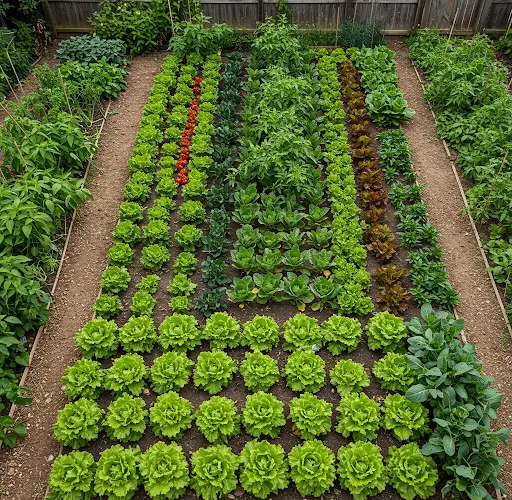How to Use Cover Crops to Improve Soil Health in Your Vegetable Garden
Cover crops are one of the most effective and natural ways to boost soil quality in a vegetable garden. They serve several important functions: retaining moisture, adding organic matter, and protecting soil from erosion. When used properly, cover crops can transform your garden beds into fertile, living soil ecosystems that support healthy plant growth without the need for synthetic fertilizers.
In this method, even leftover seeds like carrots and fenugreek can be turned into a valuable cover crop. These plants grow quickly and provide excellent biomass both above and below the soil surface. Once they’ve matured, it’s time to turn this temporary crop into nourishment for your garden bed.
Step 1: Cut Down the Cover Crop
The first step in preparing your bed for future planting is to cut down the cover crop. Use a sharp shovel or garden shears to carefully cut the plants at ground level. It’s important not to disturb the soil too much during this process. Maintaining the structure of the soil is key to preserving the delicate web of life underground—microbes, earthworms, and beneficial fungi all depend on it.
Instead of digging the plants into the soil, lay the cut material flat across the surface. This top layer of green matter will decompose naturally, returning nutrients back into the soil as it breaks down. Meanwhile, the roots of the cover crop will remain in the ground, decomposing in place and enriching the soil from below. This no-dig approach enhances soil health while minimizing disruption to its biological integrity.
Step 2: Add Rock Phosphate for Phosphorus Enrichment
Once the cover crop has been leveled, the next step is to enrich the bed with rock phosphate. This natural mineral is an excellent source of phosphorus, a nutrient essential for root development, flowering, and fruit production. Because phosphorus moves slowly through soil, it’s best to apply it early—before planting the next crop—so it has time to become available to plant roots.
Sprinkle a thin, even layer of organic rock phosphate powder across the entire surface of the bed. Not only will this help boost the phosphorus content of the soil, but it also supports beneficial soil microbes that play a key role in breaking down organic matter and improving long-term fertility.
Step 3: Top with a Layer of Compost or Well-Rotted Manure
To encourage the decomposition of the cover crop and integrate nutrients into the soil more effectively, apply a thin layer of fully decomposed compost or aged manure. This layer doesn’t need to be thick—just enough to lightly cover the cut plant material.
Compost plays a vital role in the breakdown process by introducing beneficial bacteria, fungi, and other microorganisms that help decompose organic material. It also helps retain moisture, regulate temperature, and improve the texture and fertility of the soil. As the compost breaks down, it enhances the nutrient availability of the bed and prepares it to support new plant life.
Step 4: Allow Time for Decomposition
With the cover crop cut, phosphorus added, and compost spread, all that remains is to give the bed time to rest. Over the next 10 to 14 days, the cut plant material will begin to decompose, and the soil microbes, earthworms, and beneficial fungi will get to work. During this time, the nutrients locked in the cover crop will be gradually released into the soil.
Unlike synthetic fertilizers, which can cause sudden nutrient surges and deplete soil life, this natural decomposition process builds long-term fertility. It supports a thriving ecosystem underground, making the soil more resilient and fertile for the next round of crops.
The Benefits of Using Cover Crops
Using cover crops in this way offers a wide range of benefits to your garden:
-
Improved soil structure: As the roots break down, they create natural channels that enhance aeration and water infiltration.
-
Moisture retention: The mulch-like layer created by the decomposing plants helps hold moisture in the soil, reducing the need for frequent watering.
-
Weed suppression: The plant residue on the surface forms a natural mulch that blocks sunlight and prevents weed seeds from germinating.
-
Reduced need for chemical fertilizers: As the organic matter breaks down, it releases valuable nutrients slowly and steadily.
-
Enhanced microbial activity: Compost and cover crops feed the soil life, which in turn supports healthier plant growth and disease resistance.
Ready for Planting
After 10 to 14 days, your garden bed will be transformed into a nutrient-rich, biologically active environment ready to support new plantings. This simple method of using cover crops combined with organic amendments creates a thriving soil ecosystem that promotes vigorous, resilient plants.
By investing a little time in cover cropping and soil preparation, you’re building long-term fertility and sustainability in your garden—naturally and effectively.



